Introduction
The body is wonderfully complex. It has layers of control and coordination that many of us often take for granted. To manage this complexity, it has a control system that is incredibly precise and intelligent.
So when we have posture problems and joint pain, we need to look at exactly which part of the control system is not functioning. And address the issue. This section covers the holistic way to approach joint pain and postural problems. And what methods you can use to regain pain-free living.
Tip #26 – Understand How Posture Works
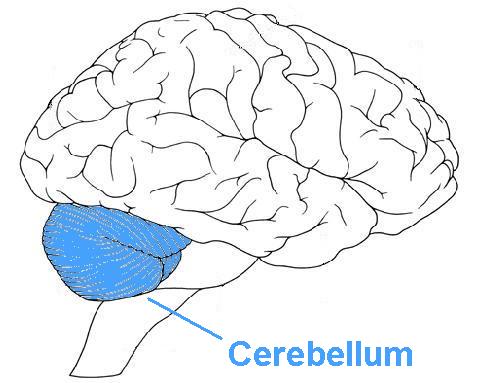
Perfect posture is probably the most important part of long-term joint health. But posture also affects almost everything else in your body, from digestion to hormone production to muscle tension, and even emotional well-being.
This is a major topic in itself, but luckily I wrote another whole post about it. Learn about how posture is controlled and corrected here.
Take a look at Tips #27, #28, #29, #30. If you have more than one of the four problems listed in them, your chances of chronic pain do increase quite a bit. And if you have three or four of these problems (like I did!) then it’s likely that you will have some form of chronic pain and a higher injury risk.
Tip #27 – Check your eyes for tracking problems
If you have eye-tracking problems, you are likely to have neck and shoulder aches. The eyes affect your head and shoulder position. There is more information in my “perfect posture” post, but you can do the quick test below and then check out the instructional video of a simple exercise you can do to fix the problem.
Try the following test. Hold a pen vertically, with the tip at the level of your eyes and the body of the pen touching your nose. Try to focus on the tip of the pen. Have someone take a picture of your eyes. Do they look more like Picture 1 or Picture 2?


Tip #28 – Check your feet for imbalances
The role of the feet in health is underestimated. Many people casually say, “I have flat feet” or “I get sore feet after a long day.” This is common, but it’s not normal.
If you have foot issues, then it’s best to get them addressed. Poor foot function affects knee, hip and back alignment and causes pain in those areas.
Many people above age 40 have gone for treatment of back or knee pain. But how many have had their feet looked at as part of the treatment? From the thousands of clients I have treated for injuries, the answer is almost zero.
Try this little exercise.
- Stand upright, with your feet shoulder-width apart. Keep your knees and hips straight – i.e., don’t bend at the waist or knees.
- Lean forward slowly until you are about to tip forward.
- Take note of whether your weight shifts to the inner or the outer part of your feet.
- It should shift to the inner part of each foot.
- Now do the opposite. Lean backward slowly.
- Your weight should shift to the outer edges of your feet.
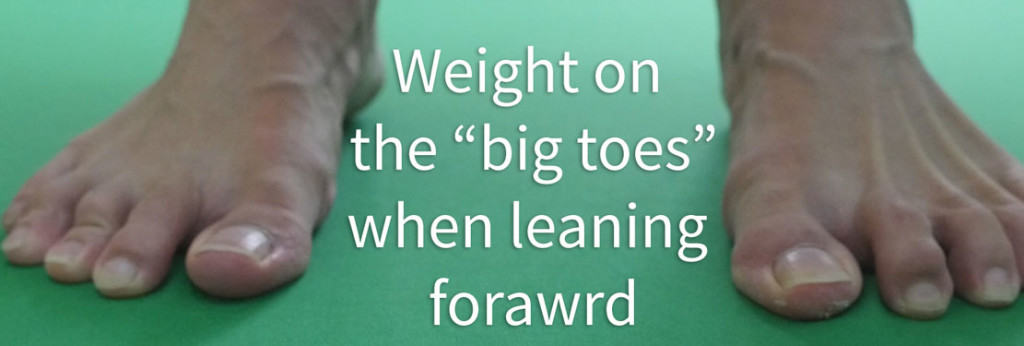

If your feet do not have perfect arches, your weight is shifted either too far forward or too far back. And if your feet are uneven, the weight will be shifted unequally on each side of your body. This puts your entire body in the wrong posture and forces your muscles to work harder all day every day, increasing your stress and muscular tension.
And that’s while you are just standing still. The problems are exaggerated once you start walking or running.
The wrong solution is to go out and get a pair of orthopedic insoles – even those that are customized. In the short run they do provide temporary relief for foot pain, but in the long run, almost everyone I have consulted with has required higher and higher heel and arch support over time.
This is terrible news because it means that your feet have gotten weaker and are even less able to support your body.
The only way to solve foot problems for good is to get your brain to activate the foot muscles correctly to restore your arches, and for the sensors in your feet to give the correct information to your brain.
My personal story is that I had one foot with a higher arch than the other foot. This meant foot and knee pain in one side of my body. Also, whenever I lifted weights, my body kept shifting to one side even though I tried my best to move in a balanced way. But I was able to correct my feet using the same system we use at Genesis Posture Therapy, and I now have equal foot arches.
I soon noticed that I was exercising without knee pain. I also noticed, one day after playing in a pool with my son, that my wet footprints on the dry ground were perfectly symmetrical. Naturally I was very happy about this.
Tip #29 – Be aware if you have tooth fillings
Be aware if you have metallic tooth fillings, which create what are called “micro-galvanisms.” This means they act as tiny batteries in your mouth. After all, they are metals, and your mouth is wet with saliva, which is mostly water.
Water conducts electricity, and this flow of electrons mildly disrupts the nerve signals that your brain uses to control the rest of your body.
Many people over 40 have had these fillings since they were teenagers. So that means many years of disrupted signals and weakened muscles.
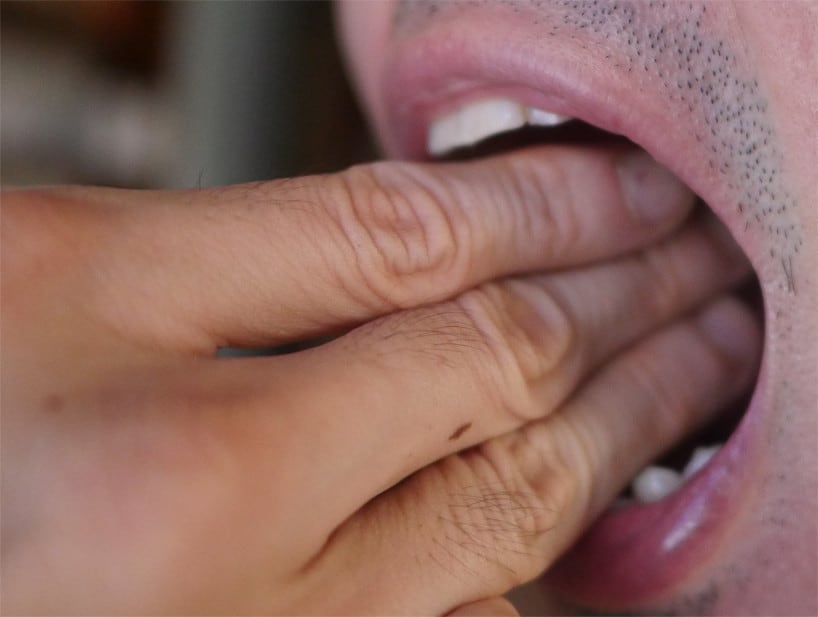
Some signs that your metallic fillings are causing you problems are:
- Aching/sore neck and shoulder muscles
- Lockjaw (you should be able to open your mouth wide enough to fit at least three fingers vertically into your mouth)
- Headaches for no apparent reason
- Inflexible neck muscles
- Uneven flexibility in neck muscles – i.e., you can turn your head further in one direction than the other
If you have metallic fillings, it’s best to get them removed by a good dentist and replaced with non-metallic ones.
But I know this is not a practical solution for most people. So one thing you can do is to connect an electrical wire from your tooth filling to a grounded part of your home. Usually, an exposed, metallic water pipe should do the trick.
With the wire in contact with one filling at a time, bite on the wire for 60 seconds and the electrical charge will drain into the ground. Repeat this with each metallic filling that you have. It’s simple physics. But if you have electrical charge built up in your fillings, the results are immediate and amazing.
Tip #30 – Be aware if you have untreated surgical scars
Your skin sends signals to your brain so that it can align the body correctly. Scars damage the skin and disrupt these signals, leading to posture problems.
You will know if scars are giving you a problem if you have more pain after your surgery than you did before it. Many of our clients have experienced greater back pain after surgery. This pain and discomfort can last for years even though healing is supposedly complete.
- One client broke his collarbone in a motorcycle accident and required surgery. He had more neck pain after the surgery, even though his bone was totally healed.
- Another client donated part of his liver to a family member. After the surgery he had back pain and eventually suffered a slip disk.
- Many female clients have also reported greater back pain after giving birth via C-section.
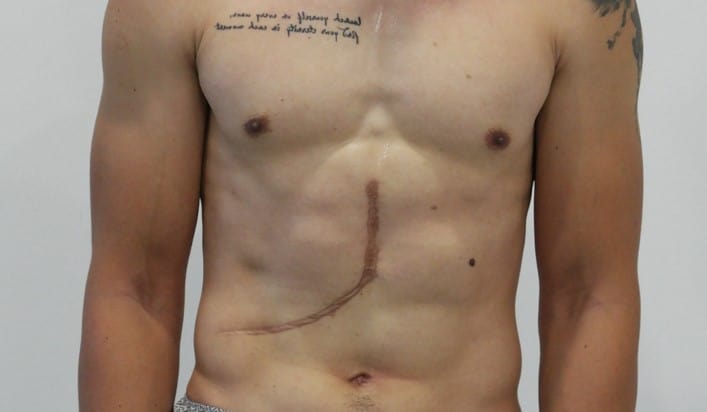
Another way you will know if a scar is giving you a problem is when it is either:
- Still a very different color from the skin around it; or
- Painful to the touch. To test this, firmly pinch an area of skin about 1-2 inches away from the scar. Then pinch the skin directly under the scar. They should feel exactly the same. If the area under the scar hurts more, the scar is not fully healed.
The best way to fix scars is to use a special essential oil blend with the main ingredient helichrysum. Massage this into the scar daily and you will notice the tenderness go away over time.
This does take some patience. Personally, I have a scar from a hernia surgery when I was five months old. Once I learned how it disrupted my posture, I started massaging the essential oils into it daily.
It was painful at first. The area under the scar was tender to massage, and it felt like someone was punching me in the stomach.
It took several months for the area to be totally pain-free to touch. But it was worth the effort and the initial discomfort, and it reduced my back pain.
Tip #31 – Check your body in the mirror for misalignment
Stand naturally in front of the mirror and look at the level of your hips and shoulders. Is one side higher than the other? If so, then this is something you’ll want to address. It may only be a matter of a few centimeters, but over time such misalignment can wear down joints and cause all kinds of problems. Again, these are explained in more detail in my post on how to fix posture.
Some static stretching can be done to lengthen tissues. This can give temporary relief, but it does not permanently change misalignment if the root cause is deeper.
Still, stretching is good for you. And I’ve outlined a free stretching program in this post on how to do stretching correctly. Also see Tip #7.
Tip #32 – Add self-massage to your routine
Massage of all kinds has beneficial effects. But when it comes to pain relief, the best kind you can safely do on your own is trigger point massage.
Trigger points are knotted-up areas of muscle that cause problems. They can be due to strain, posture problems or injury. There is limited blood flow to these areas, meaning that less oxygen gets to the tissues.
When this happens, tissues tend to be more prone to scar tissue formation. They are also more sensitive to the touch, often referring pain to other areas of your body. Proper massage technique uses pressure to temporarily (for five seconds or so) stop blood flow to the affected area. Then the pressure is released, and extra blood rushes in. This “rush” of blood accelerates healing.
While there is nothing wrong with going to visit a talented massage therapist for a session, our team always recommends self-massage methods for long-term results. Why?
- Learning these techniques empowers you to care for yourself, and the positive emotions from this are good for healing.
- Healing is more effective when you can treat the area often, but only for a short while. This means that self-massage three times per day for five minutes is almost always more effective than visiting a massage therapist for an hour once per week.
- You don’t have a massage therapist with you all the time!
While it does not always address the cause of the trigger point, trigger point massage often gives very good relief.
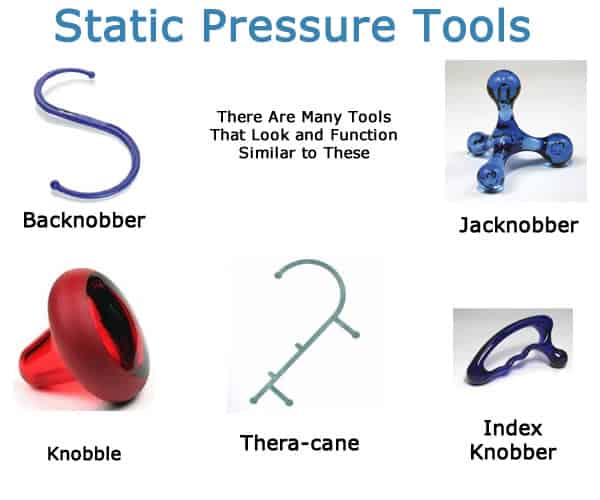
The actual self-massage techniques for all your different muscles can fill a book by themselves. One good book is The Trigger Point Therapy Workbook by Claire Davies.
But for a quick tutorial, I’ve found a series of videos on YouTube to be well-taught and very comprehensive. They are by a therapist named Gary Crowley, and his channel is here. Just search that channel for the area of your body with the pain, and he has a set of treatments that you can try.
Get Your Free Fitness After 40 Downloads
Get your Fitness After 40 Checklist, Workout Video, And Workout Programme Here
Thanks For Downloading! Time to take action:)
